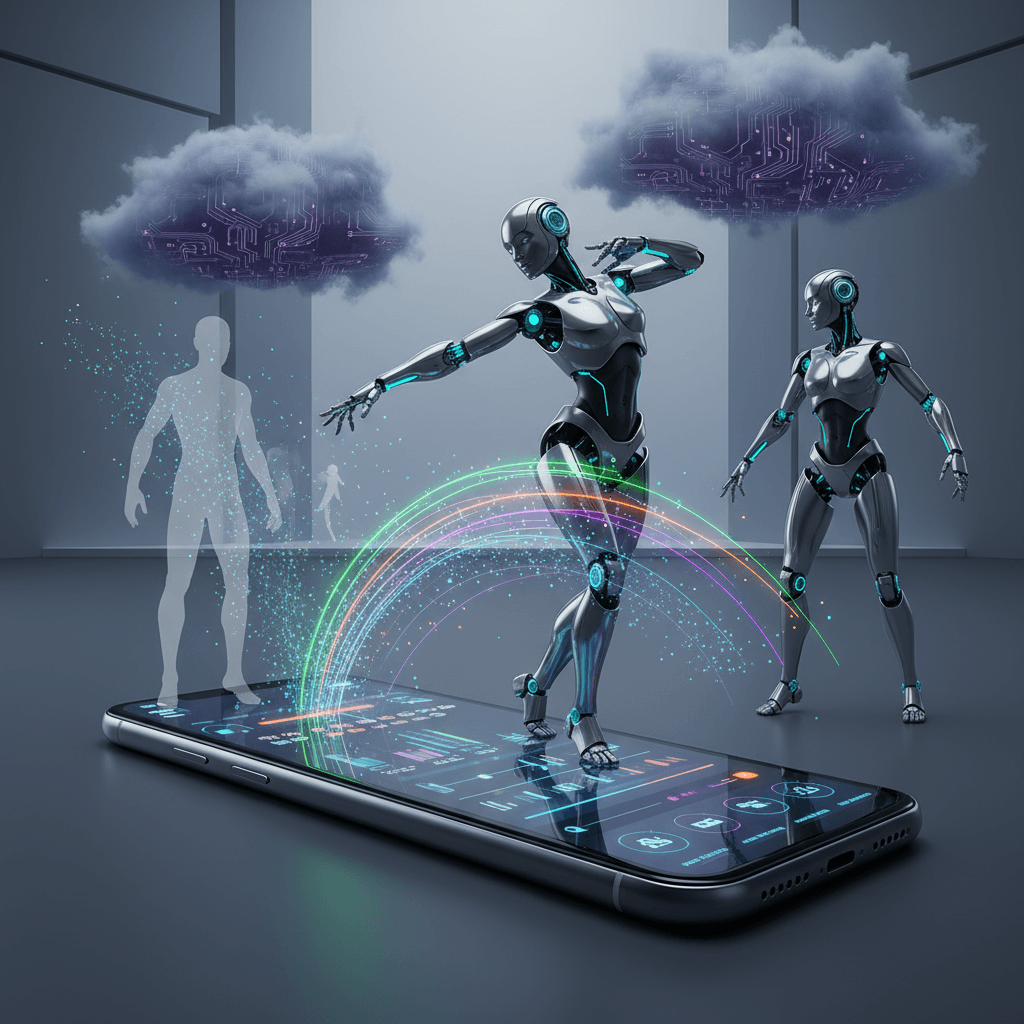AgiBot's LinkCraft Turns Smartphones into Zero-Code Humanoid Robot Directors
AgiBot's LinkCraft transforms smartphones into 'robot director tools,' democratizing complex humanoid programming without any code.
October 27, 2025

In a significant move poised to reshape human-robot interaction, Chinese robotics firm AgiBot has unveiled LinkCraft, a platform that transforms a common smartphone into a sophisticated "robot director tool." This zero-code content creation system empowers users without any programming expertise to generate complex, precise performances for humanoid robots simply by recording and uploading a video. The launch signals a major step toward the democratization of robotics, moving the ability to program and direct automatons from the exclusive domain of engineers to the general public, and further solidifies China's growing influence in the field of embodied artificial intelligence.
The core of the LinkCraft platform is its ability to translate human motion into robotic action through advanced AI.[1] Previously, animating a humanoid robot required specialized and expensive motion capture equipment, complex algorithmic modeling, or deep expertise in reinforcement learning.[2] LinkCraft bypasses these barriers by employing AI-driven motion capture that analyzes 2D video footage from any phone.[3] The system's algorithms identify human movements and, through a cloud-powered imitation learning framework, convert them into precise control strategies for the robot's hardware.[4] This allows anyone to record a dance, a martial arts routine, or simple gestures and have a humanoid robot replicate the performance with remarkable accuracy.[1] Future updates are expected to enhance this capability to include fine motor control of individual fingers, allowing for even more detailed and lifelike actions.[4]
Beyond simple mimicry, LinkCraft provides a suite of tools that offer users comprehensive directorial control. The platform functions much like video editing software, featuring a timeline orchestration system where users can sequence various actions, sounds, and expressions with frame-by-frame precision.[5] This enables the creation of complex, narrative-driven performances, a concept AgiBot refers to as "robot storytelling."[1] The system also integrates a powerful voice performance feature; users can upload audio, record their own voice, or utilize AI-based speech synthesis with customizable tones and emotions.[5] Multimodal AI models then synchronize the voice with facial expressions and body language to create a more natural and emotionally engaging performance.[5] For more ambitious projects, a "Group Control" feature allows for the simultaneous choreography of multiple robots, enabling the creation of synchronized stage shows or interactive retail displays from a single device.[6] To further lower the barrier to entry, the platform includes a library of over 180 preset actions and 140 expression templates.[4] The public beta of LinkCraft is currently live and compatible with the AgiBot X2 robot, which is already in mass production.[5]
The launch of LinkCraft is a clear manifestation of China's national strategy to become a global leader in artificial intelligence and robotics. Beijing's "AI+" initiative, a decade-long blueprint for development, aims to integrate AI into every facet of the economy and society, pushing the nation into an era of "intelligent civilisation."[7] This policy framework prioritizes the development of 'embodied AI'—intelligent systems that can interact with the physical world—and fosters a unique environment for innovation in robotics through strong state backing and a vast hardware ecosystem.[8] By 2035, the vision extends to robots not only revolutionizing industrial production but also assisting in social governance and even becoming companions in households.[9] Companies like AgiBot are at the forefront of this push, developing technologies that make robots more accessible and versatile, helping to transition them from laboratory showcases to practical, real-world applications in sectors like entertainment, retail, research, and education.[4]
The broader implications of democratizing robotics through platforms like LinkCraft are profound, sparking both excitement and ethical debate. By removing the high barrier of coding, this technology has the potential to unleash a wave of creativity, enabling artists, educators, and small businesses to leverage humanoid robots in novel ways.[10] However, this newfound accessibility also raises important societal questions. The ease of programming robots could accelerate job displacement in certain sectors while creating new roles centered around robot management and content creation.[11][12] Furthermore, as humanoid robots become more prevalent and capable of mimicking human emotion and behavior, ethical considerations around their use in sensitive areas like elder care or companionship become more urgent.[13] Issues of privacy, data security, and the potential for robots to perpetuate biases embedded in their programming are critical challenges that society must navigate as this technology becomes more widespread.[14] The advent of the "robot director" in every pocket is not just a technological leap; it is a catalyst for a fundamental re-evaluation of the future relationship between humans and intelligent machines.